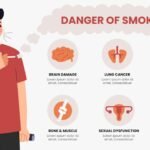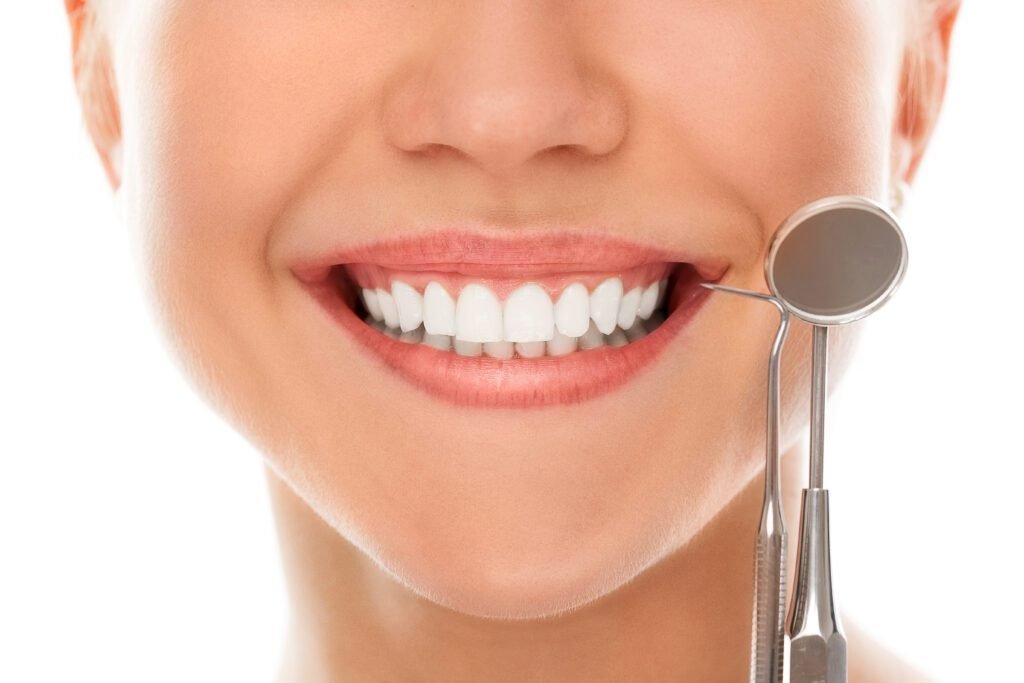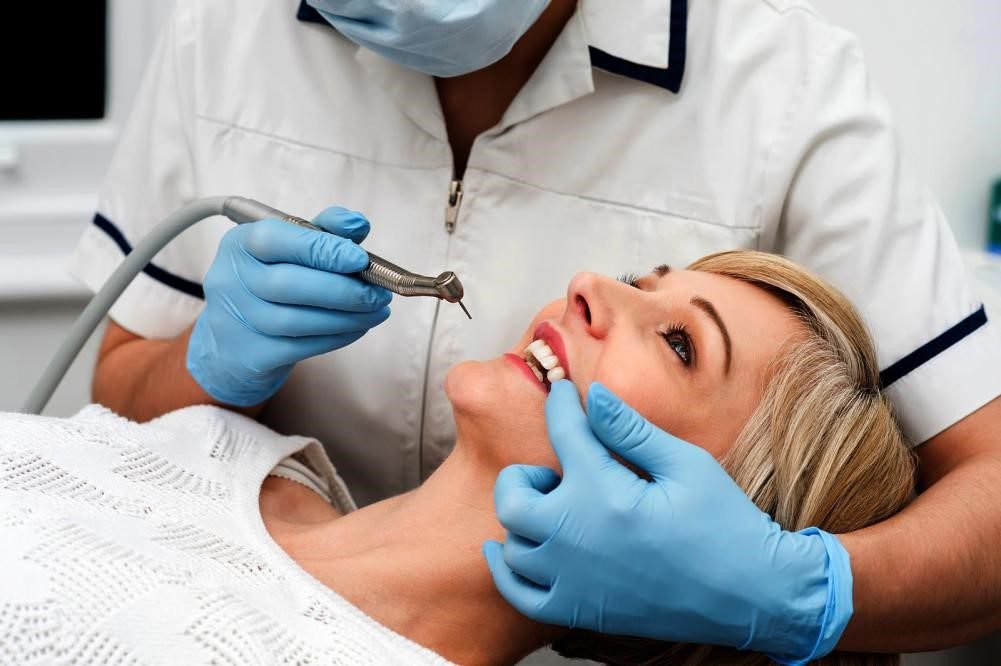Did you know that the risk of developing dry socket among smokers is a staggering 13.2% while it stands at only 3.8% for nonsmokers? This alarming statistic underscores the significant risks of smoking and vaping after tooth extraction. When undergoing a tooth extraction, proper post-operative care is vital for a smooth recovery, yet many patients neglect the impact of continuing tobacco use.
Both smoking and vaping introduce harmful substances that can complicate the healing process, leading to increased discomfort and potential complications. In fact, smokers are more likely to experience prolonged pain, swelling, and even infections following dental surgery. As part of this article, we will delve into the implications of smoking after tooth extraction, explore the specific risks of vaping, and highlight why abstaining from these habits during recovery is crucial for optimal healing.
Table of Contents
The Importance of Post-Operative Care
Post-operative care plays a critical role in ensuring a successful recovery after tooth extraction. Following dental procedures, patients face risks such as infections and complications that can significantly hinder tooth extraction recovery. Adhering to the guidelines provided by dental professionals is essential to maintain oral health during this period.
Patients are often advised to implement specific practices to minimize risks. Recommendations generally include:
- Avoiding strenuous activities for a few days.
- Following dietary restrictions, particularly with hot or hard foods.
- Staying hydrated while avoiding harmful substances.
- Avoiding smoking after tooth extraction, as it can lead to serious complications.
Smoking after tooth extraction can introduce bacteria and hinder blood flow to the healing site. This behavior increases the likelihood of developing complications such as dry socket and prolonged postoperative pain. By following a diligent post-operative care routine, patients can greatly enhance their healing process and reduce the chances of adverse outcomes that could impact their oral health.
| Post-Operative Care Tips | Impact on Recovery |
|---|---|
| Avoid smoking | Reduces risk of dry socket and infection |
| Follow a soft diet | Minimizes irritation to the extraction site |
| Use prescribed medications | Helps manage pain and prevent infections |
| Stay hydrated | Supports overall healing and oral health |
Understanding the importance of these practices emphasizes the need for thorough post-operative care. Maintaining this diligence makes for a smoother and safer recovery experience.
Understanding Tooth Extraction and Healing
Tooth extraction is a common dental surgery performed to remove a problematic tooth, often due to decay, infection, or overcrowding. Understanding the healing process associated with tooth extraction is vital for a successful recovery. Upon the removal of a tooth, the body’s natural healing process begins immediately, focusing on forming a blood clot in the socket. This clot acts as a protective barrier, enabling tissue regeneration and minimizing the risk of complications.
The recovery timeline varies from person to person, typically spanning several days to a couple of weeks. Factors such as individual health, the complexity of the extraction, and adherence to post-operative instructions will impact this timeline. It is essential to follow the dentist’s recommendations to facilitate optimal healing.

Post-extraction, patients often find that smoking significantly impedes the healing process. Smokers generally report a more painful recovery, heightened risks of developing a dry socket, and prolonged inflammation. The chances of developing a dry socket are three times higher for smokers compared to non-smokers and can occur as early as 3-4 days after the extraction.
Maintaining blood flow is crucial during the recovery timeline, and smoking reduces blood flow and oxygen supply to the healing site, complicating the recovery process. Nicotine further exacerbates the situation by increasing bleeding and inflammation. Therefore, avoiding smoking for a minimum of 72 hours post-extraction is advised to promote proper healing and reduce complications.
| Factor | Non-Smokers | Smokers |
|---|---|---|
| Chance of Developing Dry Socket | 4% | 12% |
| Recommended Wait Time to Smoke After Extraction | Minimum 1 day | At least 72 hours |
| Impact on Healing Process | Smoother recovery | Increased pain and risk of complications |
In conclusion, a thorough understanding of the tooth extraction and healing process can empower patients to make informed decisions regarding their recovery. Avoiding smoking during this period is a critical step in ensuring a smoother healing journey.
What Is Vaping?
Vaping refers to the act of inhaling vapor produced by e-cigarettes or other vape devices that heat e-liquids. This practice has gained considerable popularity among individuals seeking alternatives to traditional smoking. Approximately 5% of Americans engage in vaping, yet its implications are especially significant for those recovering from dental procedures.
Despite the appeal of e-cigarettes, understanding the vape risks is crucial for maintaining oral health, particularly after tooth extractions. Vaping can disrupt the clotting process essential for healing, increasing the likelihood of complications such as dry socket. Dentists often recommend waiting at least 48 hours post-surgery before considering vaping again.
The nicotine present in vape liquids poses additional challenges. It can slow the healing process by constricting blood vessels, which hampers blood flow to the surgical site. Furthermore, the inhalation technique associated with vaping can create a sucking motion that might dislodge the blood clot, risking severe pain and extended recovery times.

Many people overlook the importance of maintaining cleanliness in their vape pens, which can lead to bacterial contamination. Oral hygiene becomes even more critical after procedures like extractions. It’s often suggested to perform saltwater rinses after vaping to mitigate infection risks and encourage proper healing.
| Considerations for Vaping Post-Extraction | Details |
|---|---|
| Wait Time | At least 48 hours recommended |
| Risks | Potential for dry socket and delayed healing |
| Nicotine Effects | Vasoconstriction slows down healing |
| Cleaning | Regular cleaning of vape pens is essential |
| Recommendations | Start with short puffs after 48-72 hours; keep wattage low |
Realistically, dentists and oral surgeons typically advise against smoking or vaping during the initial healing phase. By being informed about the intricacies of vaping, individuals can make better choices to support their recovery after tooth extraction.
Smoking and Vaping after Tooth Extraction
Engaging in smoking or vaping after a tooth extraction can greatly hinder the healing process. It introduces harmful toxins that disrupt tissue recovery and elevate inflammation levels. Understanding the risks associated with these habits is essential for ensuring a smooth recovery.
Overview of Risks to Healing
The act of smoking after tooth extraction compromises blood flow to the gums and surrounding tissues. Smokers are statistically more prone to experience healing complications, including prolonged recovery times and discomfort. This is primarily due to the chemicals present in tobacco, which can facilitate issues such as dry socket and increase inflammation significantly. Vaping risks also abound, with those using e-cigarettes experiencing similar detriments to their recovery.
Potential Complications from Smoking and Vaping
Complications from smoking include:
- Dry Socket: Smoking contributes to the risk of dry socket by loosening blood clots essential for healing.
- Infections: Nicotine and tar impair the body’s ability to fend off infections, prolonging recovery times and potentially leading to further complications.
- Delayed Healing: Reduced blood flow from smoking leads to a slower healing timeline, causing additional discomfort.
For vapers, complications from vaping can mirror those seen with traditional smoking. Delayed healing may occur due to the same underlying issues, including the irritants found in vape liquids. It is advisable to avoid these habits entirely for at least 48 to 72 hours following surgery to mitigate these risks effectively.
The Impact of Nicotine on Healing
Understanding the nicotine effects on the body can shed light on why it’s critical to avoid smoking after tooth extraction. Nicotine acts as a vasoconstrictor, reducing blood flow to the surgical area. This limitation directly impacts the healing process by impairing the delivery of oxygen and essential nutrients to the affected tissues.
Smokers often report a more painful healing process compared to non-smokers. It is advisable to refrain from smoking for at least one day after the extraction, with an ideal guideline being a full 72 hours. Such abstinence significantly lowers the risk of developing complications, including the painful condition known as dry socket. The carbon monoxide found in cigarette smoke decreases oxygen levels in the blood, further inhibiting crucial nutrients from reaching healing tissues.
Good oral health through strict hygiene practices becomes even more essential for smokers post-extraction. With the potential for weakened immune response and a greater risk of infection, the healing process can be jeopardized. Smokers face heightened vulnerability to dry socket due to compromised blood clot formation, underscoring the importance of avoiding nicotine during recovery.
For those struggling with nicotine addiction, alternatives such as nicotine replacement therapy can provide a safer option during the healing period. Staying hydrated and rinsing the mouth with warm saltwater after smoking can also help minimize infection risks. Prioritizing these practices aids in a smoother recovery and promotes better long-term oral health outcomes.
Complications Associated with Smoking
Smoking significantly impacts recovery from tooth extraction. Those who smoke after tooth extraction face a higher risk for complications, particularly the development of dry socket and infections. Understanding these risks can guide patients toward making informed decisions about their post-operative care.
How Smoking Leads to Dry Socket
The act of smoking creates a sucking motion that can dislodge the blood clot forming at the extraction site. The loss of this clot exposes underlying nerves and bone, resulting in intense pain known as dry socket. Statistics indicate that smokers experience a dry socket prevalence of about 13.2%, compared to 3.8% in non-smokers, underlining the significant smoking dry socket risk. To minimize tooth extraction complications, it is advisable to wait at least 72 hours before smoking after a tooth extraction. This allows for adequate clot formation, reducing the chances of oral surgery complications.
Increased Risk of Infection from Smoking
The presence of nicotine in cigarettes weakens the immune system, making recovery from dental procedures more difficult. This leads to a higher infection risk smoking, particularly during the post-operative healing period. Smoking narrows blood vessels and reduces blood flow, which is crucial for delivering nutrients needed for healing. This compromised recovery process can escalate the likelihood of infections, making the patient more vulnerable to various tooth extraction complications. Alternative methods, such as nicotine patches or gum, can provide some relief during this critical recovery phase.
Vaping Post-Extraction: Is It Safe?
Vaping has gained popularity as an alternative to traditional smoking, with approximately one in every 20 Americans currently using vapes. This trend raises important questions about the safety of vaping after dental procedures, particularly tooth extractions. Understanding the vaping effects on the healing process can help patients make informed decisions during dental surgery recovery.
Understanding Vaping and Its Effects
While many see vaping as a safer choice compared to smoking cigarettes, it still carries potential risks, especially post-extraction. Utilizing vaping devices can introduce irritants into the oral environment, potentially complicating recovery. Studies on vaping have shown that these devices can contribute to dry socket, swelling, and prolonged healing time if used too soon after an extraction.

Research on Vaping Risks After Surgery
Emerging vaping research indicates that patients should wait at least 48 hours before resuming vaping after tooth extraction to promote effective healing. It is advisable to initially engage in shorter vaping sessions, protected by gauze, and gradually increase the duration after 72 hours. Maintaining low wattage settings and keeping vaping devices clean are crucial for minimizing discomfort. Following these guidelines not only improves the safety of vaping but also reduces undesirable post-operative implications.
| Time After Extraction | Vaping Guidelines |
|---|---|
| 0-48 Hours | No vaping recommended |
| 48-72 Hours | Short vaping sessions with gauze |
| 72 Hours and Beyond | Gradually increase vaping time; keep wattage low |
| Post-Vaping Care | Use saltwater rinse to prevent dry socket |
Following these recommendations can help ensure a smoother recovery and enhance the safety of vaping after dental procedures.
The Healing Process Explained
After a tooth extraction, the body engages in a complex healing process that involves several stages. Initially, a blood clot forms in the extraction site, acting as a protective barrier. This is a critical first step in tooth extraction recovery, as it facilitates tissue regeneration and helps prevent infection.
Following clot formation, the surrounding tissues start to heal. The body sends white blood cells to the area to combat any potential infections and to promote healing. This phase is essential for restoring the integrity of the gums and jawbone. Adhering to post-operative guidelines can significantly impact the speed and effectiveness of this recovery stage.
Continuing with proper care during the healing process plays a vital role in preventing complications. Activities such as smoking can hinder recovery, delaying the healing process and increasing the risk of conditions like dry socket. Studies indicate that smoking can double the time needed for complete recovery. It is advisable to refrain from smoking for at least 72 hours after the procedure for optimal healing.
The following table summarizes the impact of smoking on the healing process and risks associated with premature activity post-extraction:
| Impact of Smoking | Description |
|---|---|
| Delays Healing | Smokers may experience prolonged recovery times, with healing extended up to twice as long compared to non-smokers. |
| Increased Risk of Dry Socket | Smoking soon after extraction increases the likelihood of developing dry socket, a painful condition occurring in about 12% of smokers. |
| Compromised Tissue Health | Tobacco smoke damages healing tissues, often resulting in prolonged pain and complications. |
| Higher Infection Risk | The reduction of blood flow due to smoking diminishes oxygen delivery to the wound, creating a favorable environment for infections. |
| Guideline for Resuming Smoking | To enhance healing and minimize risks, it is recommended to wait at least 3-4 days before smoking. |
Understanding the stages of the healing process and adhering to effective post-operative guidelines is crucial for a smooth recovery. Prioritizing these factors can lead to a more comfortable experience and significantly boost the chances of successful healing after a tooth extraction.
Recommendations for Smokers and Vapers
Taking proper care of your mouth after a tooth extraction is vital for healing and overall health. For smokers and vapers, understanding the critical timeline for resuming these habits can greatly influence the recovery timeline. Following the right smoking and vaping recommendations helps reduce potential complications.
How Long to Wait Before Resuming Smoking
Experts advise waiting at least 48 to 72 hours before resuming smoking after tooth extraction. This timeframe allows the body to establish necessary blood clotting, which is crucial to successful healing. Smoking during this period can displace clots, escalating the risk of dry socket and other complications. A recovery timeline that incorporates this waiting period ensures a much smoother healing process.
Guidelines for Vaping After Tooth Extraction
Similar to smoking, the safest course of action for those who vape is to refrain for at least 48 hours after the procedure. Following vaping guidelines can help minimize risks. Inhaling with minimal force reduces irritation around the extraction site. Using the lowest wattage settings can help prevent excessive heat that may lead to swelling. After vaping, performing salt water rinses can assist in flushing out any debris or bacteria potentially harmful to the extraction site.
Alternative Options During Recovery
After a tooth extraction, finding suitable nicotine alternatives can support individuals in their recovery journey. For those who typically rely on smoking or vaping, options like nicotine patches or gum can be effective. These alternatives aid in managing cravings while allowing the body to heal without the risks associated with smoke or vapor.
It is crucial to remember that even after opting for these alternatives, the healing process should remain a priority. Dental professionals often recommend refraining from any nicotine use for at least 72 hours following the procedure. This waiting period is essential as nicotine can inhibit healing and increase the risk of complications, including dry sockets.
Those seeking recovery support may also consider additional resources tailored to their needs. Specific programs focus on helping individuals quit smoking, providing personalized plans that address different demographics. By engaging in these support systems, individuals can improve their chances of a successful recovery while steering clear of traditional smoking and vaping.
Understanding the importance of maintaining oral hygiene and following dietary guidelines is paramount. Soft foods, blended soups, and creamy options can ensure proper nutrition during recovery without exacerbating discomfort. Engaging in these practices can further complement the use of nicotine alternatives, contributing to a smoother healing process.
The Role of Oral Hygiene Post-Extraction
Maintaining proper oral hygiene after a tooth extraction is essential for a smooth recovery and optimal dental health. Effective oral hygiene directly influences healing, helping to mitigate risks of infection and other complications. Following the extraction process, patients should adhere to their dentist’s guidelines regarding cleaning techniques and products.
During the initial days post-extraction, gentle care is paramount. Recommended practices for oral hygiene include:
- Using a soft-bristled toothbrush to avoid irritating the surgical area.
- Rinsing with warm salt water to help reduce inflammation and promote healing.
- Avoiding vigorous rinsing that might dislodge the blood clot and disrupt the healing process.
- Refraining from smoking or vaping, as these activities can hinder recovery and impair oral hygiene efforts.
Proper oral hygiene practices significantly support post-operative care, enhancing the healing of the extraction site. Failure to maintain adequate oral hygiene can result in complications, including increased pain, swelling, and even infections.
By prioritizing oral hygiene, patients can play an active role in their recovery journey. Keeping the surgical area clean not only decreases the likelihood of infection but also contributes to pain management and overall dental health.
| Oral Hygiene Practice | Recommended Timing | Purpose |
|---|---|---|
| Soft-bristled toothbrush usage | 2-3 days post-extraction | Minimize irritation |
| Warm salt water rinses | Start day after surgery | Reduce inflammation |
| No vigorous rinsing | Throughout healing process | Preserve blood clot |
| Avoiding smoking/vaping | At least 72 hours | Enhance healing |
Incorporating these strategies into post-operative care routines will fortify the healing process, ensuring a quicker return to normal dental health.
Signs of Complications to Watch For
After a tooth extraction, monitoring your recovery is vital for identifying any potential post-surgery complications. Paying attention to any unusual signs can facilitate timely intervention and protect your dental health. One of the most common issues following tooth removal is dry socket, a painful condition that may hinder your dental recovery.
Identifying Symptoms of Dry Socket
Dry socket symptoms usually emerge a few days after extraction, often becoming increasingly severe. Recognizing these symptoms early can minimize discomfort and allow for prompt treatment. Key indicators include:
- Persistent throbbing pain that doesn’t subside, often radiating to the ear.
- Visible bone in the empty socket, which can indicate insufficient healing.
- Bad breath or a foul taste in the mouth due to complications.
- Low-grade fever, potentially signaling an infection.
It’s essential to seek dental attention if these dry socket symptoms appear. The risk of developing dry socket increases with factors such as smoking, poor dental hygiene, or undergoing a difficult extraction. Maintaining good oral care post-extraction can significantly contribute to a smoother recovery process.
| Dry Socket Symptoms | Description |
|---|---|
| Throbbing Pain | Severe and persistent, often radiating to surrounding areas. |
| Visible Bone | Bone exposure in the socket, indicating inadequate healing. |
| Bad Breath | Foul odor from the mouth, often linked to infection. |
| Low-Grade Fever | Elevated temperature that may suggest an underlying issue. |
Being vigilant about these signs can help ensure a successful dental recovery, enabling you to enjoy better oral health in the long run.
Consulting Your Dental Professional
Engaging in a dental professional consultation after a tooth extraction is essential for ensuring a smooth and healthy recovery. Your dental provider can offer invaluable post-surgery advice tailored to your specific circumstances. They are equipped to address any concerns regarding your healing process, particularly if you have habits like smoking or vaping that may impact oral health.

Understanding the implications of smoking and vaping on post-extraction healing is vital. Smokers face a heightened risk of infections and complications due to nicotine’s vasoconstrictive effects. Regular check-ups with your dental professional can help you stay informed about the best practices for recovery, including when it’s safe to resume certain activities and alternative options to manage cravings.
Prioritizing open communication with your dental professional not only aids in the recovery journey but also contributes to overall oral health. Your dentist can help you devise a plan to avoid smoking for the critical first 48 to 72 hours post-extraction, enhancing blood flow and promoting proper healing. Such personalized guidance ensures that you minimize the risks associated with smoking and maximize your chances of a swift and uncomplicated recovery.
FAQ
When can I smoke after a tooth extraction?
It is generally recommended to wait at least 48 hours after tooth extraction before resuming smoking. This timeframe allows for initial blood clot formation and minimizes the risk of complications such as dry socket.
Can I vape after tooth extraction?
Similar to smoking, it is advisable to refrain from vaping for at least 48 hours post-extraction to promote better healing and reduce the likelihood of complications.
How can I smoke after tooth extraction without getting dry socket?
The best way to avoid dry socket is to abstain from smoking altogether for at least 48 hours after surgery. The suction required for smoking can dislodge the blood clot necessary for healing.
What are the risks of smoking and vaping after tooth extraction?
Smoking and vaping can introduce toxins that hinder the healing process, increase inflammation, and heighten the risk of complications such as dry socket and infections after tooth extraction.
How does nicotine affect the healing process?
Nicotine acts as a vasoconstrictor, reducing blood flow to the surgical site, which is crucial for healing. Limited blood flow impairs oxygen and nutrient delivery, thereby prolonging recovery time and increasing the risk of complications.
What is dry socket and how is it related to smoking?
Dry socket is a painful condition that can occur when the blood clot at the extraction site becomes dislodged. Smoking can cause this dislodgment due to the suction involved, leading to intense pain and delayed healing.
Are there alternatives to smoking and vaping during recovery?
Yes, alternatives like nicotine patches or gum can be beneficial for managing cravings without introducing smoke or vapor into the healing mouth. This can help avoid complications associated with smoking and vaping.
What are the signs of complications to watch for post-extraction?
Symptoms of complications such as dry socket include severe pain a few days post-extraction, an empty socket appearance, and bad breath. If you experience any of these, consult your dentist promptly.
Why is post-operative care important after tooth extraction?
Proper post-operative care is crucial for successful recovery after tooth extraction. It includes following guidelines provided by dental professionals, which can help reduce the risk of complications such as dry socket and infections.
How can I maintain oral hygiene after a tooth extraction?
Maintaining proper oral hygiene is vital during recovery. Follow your dentist’s recommendations for cleaning and care in the days following your surgery to prevent infections and promote healing.
Can I consult my dental professional if I have concerns post-extraction?
Absolutely! Staying in touch with your dental professional during recovery is essential. They can provide personalized advice, address any concerns about healing, and help manage habits like smoking or vaping.










